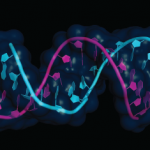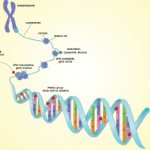Smoking and RA Risk
The best example of the interaction between genes and the environment is the connection between cigarette smoking and RA risk, said Dr. Firestein. For example, a person who is a nonsmoker and does not carry the HLA-DR risk gene has a low risk of susceptibility. Nonsmokers who have two copies of the gene have a four- to sixfold increase of susceptibility. People who have two copies of the gene who also smoke have up to a 40-fold increase, he said. Why does this occur? “It’s almost certainly related to environmental exposures and the cellular response to this stress,” Dr. Firestein said.
Citrullination Effects
Citrullination of proteins like vimentin occurs before synovial inflammation begins in RA. Once they are citrullinated, the altered or modified proteins can be mistaken for foreign antigens by the immune system, sparking the inflammatory response. RA-associated MHC proteins bind to many citrullinated proteins more avidly than they do to the native molecules.
Citrullination occurs due to many types of environmental stress, Dr. Firestein said. Very few bacteria are able to citrullinate peptides, but one is the bacterium present in periodontitis, which is associated with an increased risk of RA. Tobacco smoke also can cause peptide modification. “Smoking actually creates these neoepitopes—altered proteins—in the airway,” he said. Citrullinated fibronectin and vimentin activate T cells in patients with the risk-associated HLA-DR genes more effectively than normal peptides, with increased T cytokine production, he added. “This is an appropriate immune response to an altered peptide rather than true autoimmunity.”
Citrullinated proteins have been found in the airways of smokers, further highlighting the connection. Although poor dental hygiene and habitual cigarette smoking can contribute to many different health problems, a person’s genetic makeup plays a role in whether or not they will develop RA, Dr. Firestein added. “People who don’t have the correct genes would be far less likely to see this phenomenon,” he said.
Production of these antibodies precedes synovitis in RA. Most important, one can detect evidence of them five to 10 years before symptoms occur, Dr. Firestein said. Many different types of antibodies are involved, including anticitrullinated protein antibodies (ACPAs) in the majority of patients. Other antibody systems also exist, such as to carbamylated proteins. “If you are ACPA positive and you have arthralgias, you have about a 40% chance of going on to develop RA within two years,” he said.


